Varangian Guard: Professional Viking Warriors Highly Valued For Courage, Loyalty, Discipline And Fighting Skills
A. Sutherland - AncientPages.com - The Varangian Guard represented the elite heavy infantry regiment of the Roman ('Byzantine') Empire from 988 AD to around 1404 AD.
They were Vikings for hire who successfully conquered territories across the Empire. They fought in Crete, Italy, and Asia Minor.
Fanciful ahistorical representation of Byzantine Varangian Guardsmen (dressed more like Norman knights) and Michael Barachios. Drawing from Vinkhuijzen Collection of Military Costume Illustration. New York Public Library (NYPL) digital gallery - Public Domain
The Varangians ('in Old Norse' væringi' 'sworn companion') were foreigners who became members of the imperial bodyguard. Recruits were drawn mainly from Scandinavia, but after 1066, there were also Anglo-Saxons among the Varangians.
In the fight, the Varangians relied on long axes, which they used as their primary weapon, although they did well in combat against swords and bows. These professional warriors were highly valued for their courage and loyalty; they also had high fighting skills and the ability to carry out commands efficiently and without unnecessary questions.
According to the Icelandic Sagas, getting into the Imperial Guard was not easy. It was an entrance fee to be paid by a new member, and it was probably a large sum, which not all warriors could pay. However, "they were well received as soon as it was known that they were Norsemen."
Basil the Bulgar-Slayer (958 - 1025), Byzantine Emperor, founded Varangian Guard because he did not trust his people. The Varangians, on the other hand, were for their legendary loyalty.
The true story of these warriors is closely related to particularly one famous warrior, Harald Hardrada, "(hard ruler") officially Harald III Sigurdsson (1015-1066), one of the most famed Viking leaders. He participated in the Battle of Stiklestad in 1030 AD at the age of 15.
Before Hardrada became king of Norway, he made a living as a mercenary soldier. The saga of the king mentions that he fought in 18 battles against the Bulgarians, the Anatolian Arabs, and in southern Italy under the command of the eminent Byzantine commander, General Georgios Maniakes, during the 11th century. According to ancient sources, Hardrada had difficulties paying an entrance fee as a new guard member.
Hardrada was among the best berserkers in the army. His formidable Viking warriors were employed as protectors of the emperor, and Harald became a military commander in Kievan Rus and the Varangian Guard in the Byzantine Empire.
Hardrada developed successful tactics that transformed warfare across the Mediterranean region. For several centuries the Varangians served as both palace guards and field troops who fought in expeditionary armies; later, they became the household guards of the emperor in Constantinople and no longer went out on campaigns.
The Varangians continued their service until the second half of the 11th century, when, after the Norman Conquest (1066 AD, both English and Danish nobles who left England were eventually absorbed into it.
Some historians suggest that after the sacking of the city of Constantinople in 1204 by the crusaders, the guard ceased to exist.
By the late 13th century, Varangians mainly were ethnically assimilated by the Byzantines, though the regiment operated until at least the mid-14th century. In 1400, some people still identified as "Varangians" in Constantinople.
Written by – A. Sutherland AncientPages.com Staff Writer
Updated on July 21, 2022
Copyright © AncientPages.com All rights reserved. This material may not be published, broadcast, rewritten or redistributed in whole or part without the express written permission of AncientPages.com
Expand for referencesReferences:
Blöndal S. The Varangians of Byzantium
Hilda E. Davidson, Viking Road to Byzantium
More From Ancient Pages
-
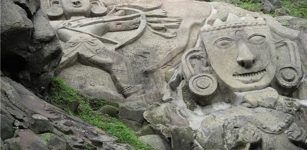 Mysterious Ancient Sculptures Of Unakoti And The Curse Of God Shiva
Featured Stories | Jul 18, 2017
Mysterious Ancient Sculptures Of Unakoti And The Curse Of God Shiva
Featured Stories | Jul 18, 2017 -
 Strange Ancient Mechanical Flying Animals – Myths Or Advanced Ancient Technology? – Part 1
Featured Stories | Mar 25, 2020
Strange Ancient Mechanical Flying Animals – Myths Or Advanced Ancient Technology? – Part 1
Featured Stories | Mar 25, 2020 -
 Mysterious Hieroglyphs Point To The Location Of Queen Nefertiti’s Tomb?
Archaeology | Sep 29, 2022
Mysterious Hieroglyphs Point To The Location Of Queen Nefertiti’s Tomb?
Archaeology | Sep 29, 2022 -
 In Ancient Times We Had Weeks Of Different Lengths
Ancient History Facts | Sep 6, 2016
In Ancient Times We Had Weeks Of Different Lengths
Ancient History Facts | Sep 6, 2016 -
 Frightening Legend Of Tate’s Hell Swamp And The Curse Of The Native American Medicine Man
Featured Stories | Feb 12, 2022
Frightening Legend Of Tate’s Hell Swamp And The Curse Of The Native American Medicine Man
Featured Stories | Feb 12, 2022 -
 Incredible Roman Necropolis With Dressed Skeletons Buried In Ornate Tombs Discovered Close To The Ancient City Of Tarquinia
Archaeology | Jan 9, 2024
Incredible Roman Necropolis With Dressed Skeletons Buried In Ornate Tombs Discovered Close To The Ancient City Of Tarquinia
Archaeology | Jan 9, 2024 -
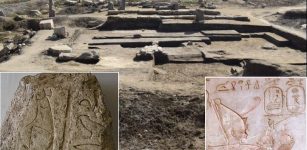 Egyptian Royal Artifacts Found At ‘Ancient Buto’ Site, Egypt Probably Dated To King Psamtik I’s Reign
Archaeology | Jan 4, 2018
Egyptian Royal Artifacts Found At ‘Ancient Buto’ Site, Egypt Probably Dated To King Psamtik I’s Reign
Archaeology | Jan 4, 2018 -
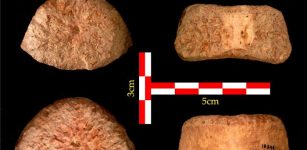 1.5 Million-Year-Old Human Vertebra Discovered In Israel’s Jordan Valley Sheds New Light On Migration From Africa To Eurasia
Archaeology | Feb 3, 2022
1.5 Million-Year-Old Human Vertebra Discovered In Israel’s Jordan Valley Sheds New Light On Migration From Africa To Eurasia
Archaeology | Feb 3, 2022 -
 Ambition, Greed And Death: The Roman Roots Of ‘Game Of Thrones’
Featured Stories | Jul 2, 2019
Ambition, Greed And Death: The Roman Roots Of ‘Game Of Thrones’
Featured Stories | Jul 2, 2019 -
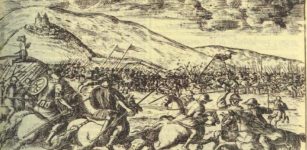 On this day in history: The Battle of the Frigidus – Sep 5, 394 AD
News | Sep 5, 2015
On this day in history: The Battle of the Frigidus – Sep 5, 394 AD
News | Sep 5, 2015 -
 Jade Emperor – Supreme Ruler Of Heaven In Chinese Mythology
Chinese Mythology | Feb 21, 2019
Jade Emperor – Supreme Ruler Of Heaven In Chinese Mythology
Chinese Mythology | Feb 21, 2019 -
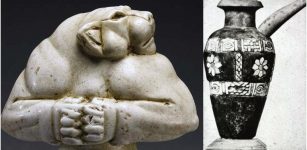 Mesopotamian City Jemdet Nasr Dated To 3100–2900 BC: Sophisticated Irrigation Techniques And Earliest Cylinder Seals
Featured Stories | Dec 18, 2016
Mesopotamian City Jemdet Nasr Dated To 3100–2900 BC: Sophisticated Irrigation Techniques And Earliest Cylinder Seals
Featured Stories | Dec 18, 2016 -
 ‘Armenian Stonehenge’: 30 Unknown Stones In Carahunge Complex – Surveyed
Archaeology | Aug 12, 2020
‘Armenian Stonehenge’: 30 Unknown Stones In Carahunge Complex – Surveyed
Archaeology | Aug 12, 2020 -
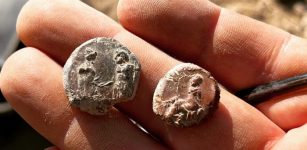 More Than 2,000 Seal Impressions Found In The Ancient City Of Doliche
Archaeology | Nov 24, 2023
More Than 2,000 Seal Impressions Found In The Ancient City Of Doliche
Archaeology | Nov 24, 2023 -
 Mysterious Kola Pyramids Built By An Unknown Lost Ancient Civilization Can Rewrite Ancient History
Civilizations | Aug 3, 2020
Mysterious Kola Pyramids Built By An Unknown Lost Ancient Civilization Can Rewrite Ancient History
Civilizations | Aug 3, 2020 -
 Unique 4,000-Year-Old Board Game – Unearthed In Oman
Archaeology | Jan 18, 2022
Unique 4,000-Year-Old Board Game – Unearthed In Oman
Archaeology | Jan 18, 2022 -
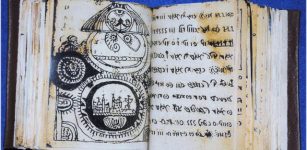 Rohonczi Codex Still Undeciphered – Is It The Most Secret Book Written In A Code?
Artifacts | May 30, 2014
Rohonczi Codex Still Undeciphered – Is It The Most Secret Book Written In A Code?
Artifacts | May 30, 2014 -
 Ancient Mothers Cared For Kids Better Than Previously Thought
Archaeology | Nov 29, 2021
Ancient Mothers Cared For Kids Better Than Previously Thought
Archaeology | Nov 29, 2021 -
 Survivors Of The Latest Ice Age Thrived Near The Sea Of Galilee 23,000 Years Ago
Archaeology | Jan 27, 2022
Survivors Of The Latest Ice Age Thrived Near The Sea Of Galilee 23,000 Years Ago
Archaeology | Jan 27, 2022 -
 Mysterious Railway Car Discovered Under An Old Fortress In Antwerp, Belgium
Archaeology | Apr 12, 2024
Mysterious Railway Car Discovered Under An Old Fortress In Antwerp, Belgium
Archaeology | Apr 12, 2024


